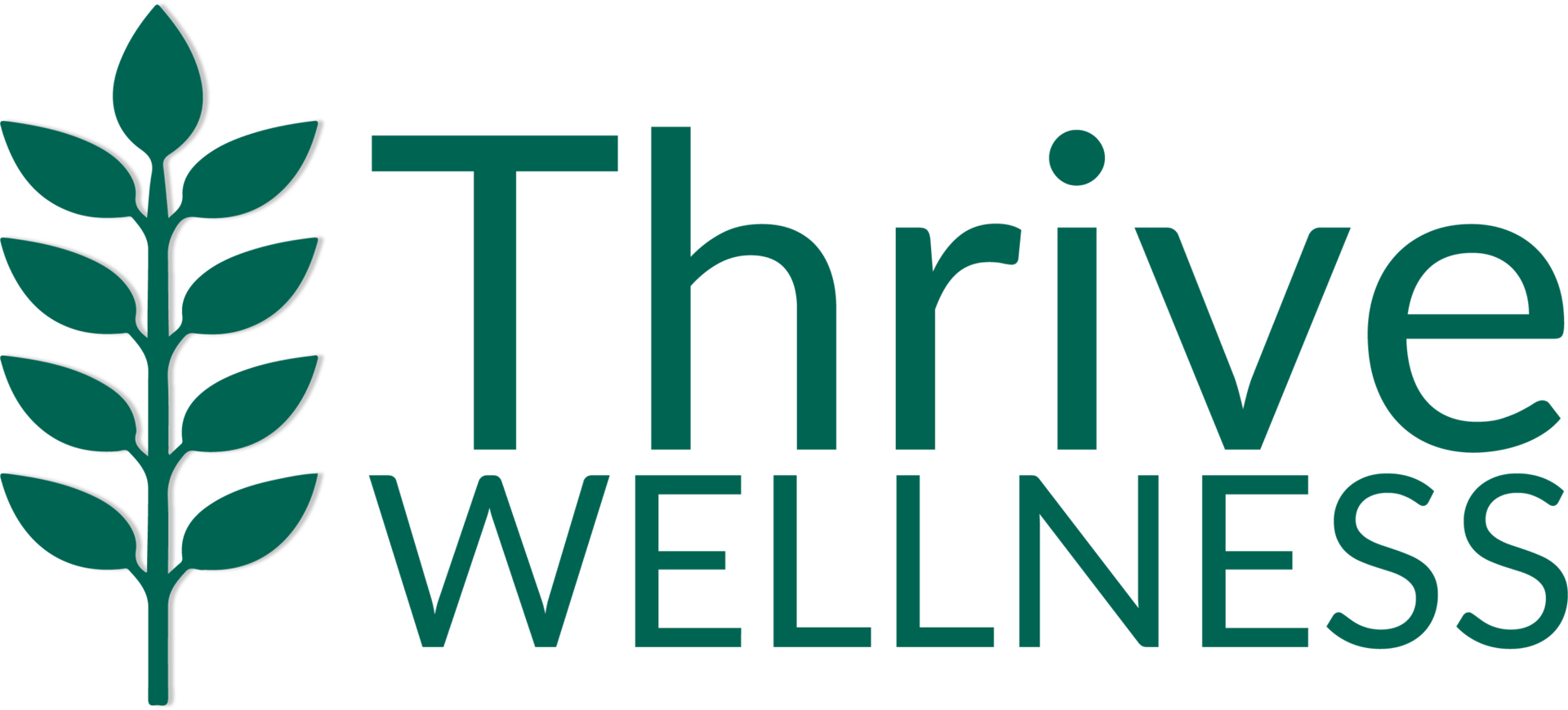
Eating disorders are one of the most serious mental health concerns facing today’s adolescents. They can affect every aspect of a young person’s life, including their physical health, school performance, relationships, self-esteem, and more. According to the National Institute of Mental Health, about 2.7% of adolescents in the U.S. will experience an eating disorder in their lifetime, and many more engage in disordered eating behaviors that may not meet full diagnostic criteria. The good news is that providers are in an influential position to notice early warning signs, open conversations, and connect families to support before these patterns of behavior become too engrained. Why Early Intervention Matters The earlier an eating disorder is identified and treated, the better the treatment outcomes. Research shows that getting support quickly after the disorder’s onset is linked to faster recovery, lower relapse rates, and healthier long-term development (Treasure & Russell, 2011). Waiting too long to seek help can mean medical complications, deeply ingrained behaviors, and a more difficult path to healing. For many adolescents, a caring provider who notices the signs and advocates for treatment can make all the difference in recovery and can even save lives. Recognizing Early Warning Signs Adolescents may not always disclose their struggles directly, so providers should keep an eye out for a range of indicators: Physical signs: noticeable weight changes, menstrual irregularities, digestive issues, dizziness, or fatigue. Behavioral patterns: skipping meals, restrictive eating, excessive exercise, frequent dieting, eating in secret, or leaving for the bathroom after meals. Emotional and cognitive signs: preoccupation with weight or body shape, food rituals, heightened anxiety around eating, or perfectionistic tendencies. It’s important to remember that eating disorders don’t always “look” a certain way. Teens can be distressed about food and body image even if their weight appears to be within a “normal” range. Screening Tools and Assessments Using free screening tools available online can be an effective way to gauge a patient’s needs and gain further insight on treatment options for a possible eating disorder. Here are 4 free screening resources we recommend you use before making a referral for a higher level of care. EDE-Q (Eating Disorder Examination Questionnaire) : helps assess eating attitudes and behaviors. Nine Item Avoidant/Restrictive Food Intake disorder screen (NIAS) : helps to assess the signs of ARFID in children. Eat 26 Screening Tool : a screening measure to help you determine attitudes towards food and eating. BEDS-7 (Binge Eating Disorder Screener) : for situations where binge eating is suspected. When possible, gathering input from parents, teachers, or coaches can also help, as teens may minimize their experiences out of fear or shame. The Role of Primary Care and Pediatric Providers Routine checkups are often where eating disorders first come to light. Providers treating children, teen, and adolescents can: Incorporate simple questions about eating habits and body image into wellness visits. Track growth charts and weight trends while pairing them with questions about mood, anxiety, and behavior. Foster trust by creating a safe, nonjudgmental space where adolescents feel comfortable sharing sensitive information and know there will be no weight stigma. Coordinating Multidisciplinary Care Supporting a young person with an eating disorder works best when care is collaborative . In order to treat the whole person, there are usually multiple members of a treatment team needed, including: Medical support: monitoring vital signs, lab work, and physical health. Therapeutic care: evidence-based approaches such as family-based therapy (FBT) and cognitive-behavioral therapy (CBT) help address thoughts and behaviors. Nutritional guidance: dietitians provide education, meal support, and reassurance. Family involvement: engaging caregivers empowers them to support recovery in everyday life. Addressing Barriers and Stigma Many families face challenges in seeking help, whether due to stigma, lack of awareness, or limited access to specialists. To help, providers can: Normalize conversations about body image and mental health as part of overall well-being. Use culturally sensitive approaches that honor diverse experiences with food, body, and health. Connect families to community organizations, online resources, or telehealth when in-person specialty care is limited. Eating disorders in adolescents are serious, but with early recognition and timely support, recovery is possible. Providers are often the first to notice changes and can play a vital role in opening doors to crucial support. By blending professional expertise with empathy and collaboration, providers can guide adolescents and their families toward lasting recovery and a healthier future. References National Institute of Mental Health. (2023). Eating Disorders . Treasure, J., & Russell, G. (2011). The case for early intervention in anorexia nervosa: theoretical exploration of maintaining factors. The British journal of psychiatry : the journal of mental science, 199(1) , 5–7.
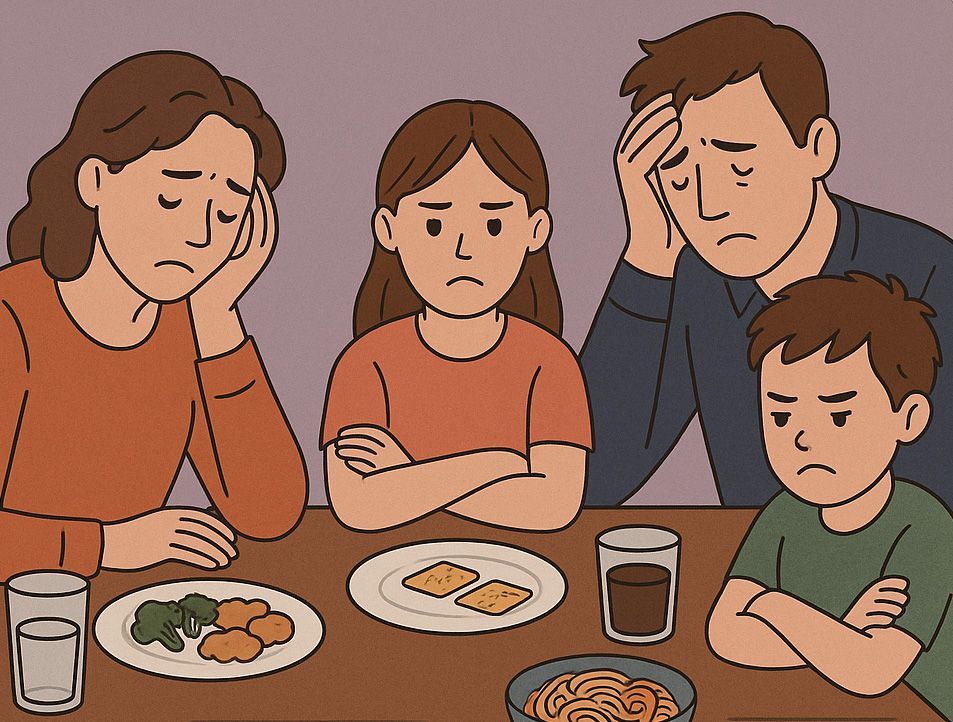
When Emma was 8, her parents noticed her food choices shrinking. At first, they assumed it was just picky eating — “She’ll outgrow it,” friends said. But by 10, Emma would only eat crackers, cheese, and chicken nuggets. Family dinners became nightly struggles, her growth slowed, and she skipped birthday parties to avoid “strange food.” Her parents felt powerless, her brother grew frustrated, and outings dwindled. What began as food avoidance soon reshaped the rhythm of the entire household. When children avoid food, most parents expect it’s a passing stage. But when restriction deepens, shrinks to only a few “safe foods,” and begins affecting growth or health, families suddenly find themselves in unfamiliar territory. This is often where Avoidant/Restrictive Food Intake Disorder (ARFID) emerges — with effects that extend far beyond the plate. As providers, we need to be attuned to these patterns. It’s tempting to dismiss them as “no big deal,” yet for many families, they are life-altering. Sadly, Emma’s story is not unusual. Mealtimes as Battlegrounds Families living with ARFID often describe mealtimes as emotionally charged, exhausting, and unpredictable. What should be a chance to connect around the table can feel more like a negotiation or even a standoff. Parents wrestle with whether to push their child to try a new food or give in to the same “safe foods” again and again to avoid tears, gagging, or complete meltdowns. This ongoing tension can make mealtimes dreaded rather than cherished. Siblings, too, are affected. Some may feel resentful when family meals are limited to what only one child will tolerate. Others may act out in response to the constant attention the child with ARFID receives. Over time, the dinner table shifts from a place of nourishment and bonding into a stage for conflict, anxiety, and guilt — a pattern that can erode family cohesion and resilience. Social Isolation and Missed Experiences ARFID impacts more than what happens at home; it influences how families engage with the world around them. Everyday events — birthday parties, school lunches, vacations, even extended family dinners — become sources of stress. Parents may pack special foods to avoid confrontation or, in many cases, decline invitations altogether to protect their child from embarrassment or overwhelm. This avoidance can lead to an unintended consequence: isolation. Families miss out on milestones, friendships, and traditions because of the unpredictability surrounding food. The child may feel left out or ashamed, while parents grieve the loss of “normal” family experiences. This social withdrawal can compound the anxiety already present in ARFID and deepen its impact across generations. Emotional Toll on Parents The emotional strain on parents navigating ARFID is significant. Many describe living in a constant state of worry — Will my child get enough nutrients? Will they ever grow out of this? Am I doing something wrong? This worry often spirals into guilt and self-blame, particularly when outside voices dismiss the disorder as mere “picky eating.” In addition, the pressure to “fix” mealtimes can strain marital relationships, creating disagreements over discipline, feeding strategies, or medical decisions. Parents may also feel emotionally depleted, pouring all their energy into managing one child’s needs while inadvertently neglecting themselves or their other children. Without support, this chronic stress can lead to burnout, depression, and disconnection within the family system. The Role of Providers For clinicians, ARFID must be viewed not only as an individual diagnosis but as a family-wide challenge. Effective care requires attention to both the clinical symptoms and the family dynamics that shape recovery. Parent Support: Educating caregivers that ARFID is not their fault, offering psychoeducation, and helping them reframe mealtime struggles as part of the disorder — not a parenting failure. Family-Based Interventions: Coaching families in structured meal support, communication strategies, and gradual exposure work so parents don’t feel powerless. Holistic Care: Involving therapists, dietitians, occupational therapists, and medical providers ensures that the family does not shoulder the weight of treatment alone. When families are validated, supported, and given practical tools, the entire household can begin to heal. Treatment is not only about expanding a child’s food repertoire but also about restoring peace, resilience, and connection at home. Moving Forward ARFID may begin with one individual, but its ripple effects are felt across the entire family system. By addressing both the psychological and relational dimensions, providers can help transform mealtimes from a source of conflict into an opportunity for healing and connection. For those who want to go deeper, we invite you to join our upcoming training on ARFID , where we will explore practical strategies for supporting both clients and their families.
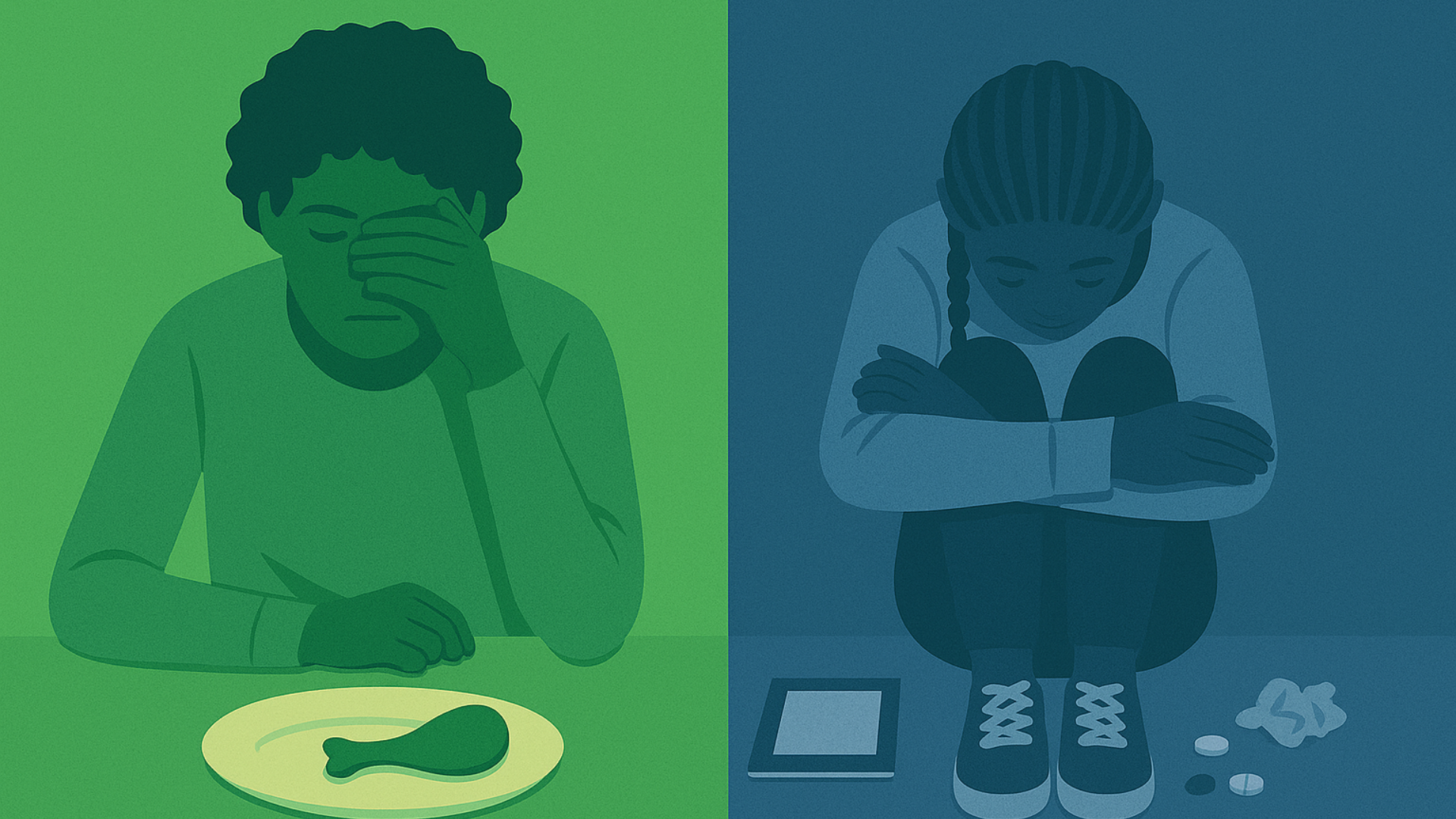
As a parent, noticing alarming behaviors around food or routines in your child can raise some important questions. You might be asking yourself, “Is this an eating disorder, obsessive-compulsive disorder (OCD), or something else entirely?” Understanding the signs and differences between these disorders is key to getting your child effective, timely treatment. In this blog, we’ll break down the overlap between OCD and eating disorders, what signs to watch for, and how to get professional help. If you're a parent wondering “Is my child’s eating disorder actually OCD?” or “OCD vs eating disorder in teens,” know that you’re not alone and you’re in the right place to find specialized care for your child. What Is OCD? Obsessive-Compulsive Disorder (OCD) is a mental health condition where unwanted thoughts (obsessions) cause anxiety, leading to repetitive behaviors (compulsions) intended to ease that anxiety. OCD can be focused on any subject. Common obsessions include contamination, perfectionism, scrupulosity, and harm, but sometimes, the content of obsessions can be focused on food, body image, or weight. What Is an Eating Disorder? Eating disorders , like anorexia nervosa, bulimia nervosa, binge eating disorder, and avoidant/restrictive food intake disorder (ARFID) involve disturbed eating behaviors and intense concerns about body weight or shape. These conditions go beyond dieting or “picky eating” and can become life-threatening without professional intervention. The Overlap: Why It Can Be Confusing OCD and eating disorders often share similar symptoms : Ritualistic eating (e.g., needing to eat foods in a certain order or at a certain time) Rigid rules about food (like only eating certain food groups or certain amounts of food) Excessive checking (like weighing food or body or repeated checking of expiration dates or thorough cooking) Avoidance behaviors ( like avoiding carbs, fats, or other food groups or avoiding places or objects that can trigger obsessions) Distress when routines are disrupted (either around mealtimes or exercise routines) So, How Can You Tell the Difference? Use the following chart to compare and contrast symptoms of OCD and eating disorders.

Coming out is a deeply personal, courageous, and in many cases, life-changing act. Whether you're sharing your sexual orientation or gender identity, coming out is about embracing authenticity and sharing an essential part of who you are. During the process of coming out, prioritizing your mental health at every stage is crucial. In this blog, we'll discuss insights and strategies to support your mental health before, during, and after coming out. Wherever you are in your journey, know that your experience is valid and you are not alone. Understanding the Mental Impact of Coming Out Coming out can bring about a lot of big feelings, including fear, relief, joy, anxiety, grief, and hope, sometimes all at once. Know that heightened emotions during this time are completely normal. Sharing such an integral part of yourself with the world can feel intense, but even with the ups and downs, being authentically you is worth it. Because LGBTQIA+ individuals face added mental health burdens due to stigma and discrimination, taking care of yourself during this time is more important than ever. You might experience increased anxiety, mental exhaustion, or avoidance ahead of coming out, so don’t be afraid to reach out for support. At its core, coming out is about authentic self-expression and showing your truest self, which can feel both exciting and scary at the same time . The self-acceptance and community gained from coming out is a vital part of finding long-term strength and joy. Still, it’s okay if you feel uncertain or conflicted, and these feelings are just part of the process. Before Coming Out: Emotional Preparation Coming out starts with reflection. Remember that there’s no rush when it comes to figuring out who you are. It’s okay to take time to understand your identity and what coming out might mean for you. Here are a few questions to consider: What do I hope to gain by coming out? Who feels emotionally safe to talk to? What are my fears, and how can I manage them? Mental wellness tips before coming out: Journaling can help you better understand your feelings and fears and explore different ways to share your truth. Talking through your feelings and different scenarios with a therapist , especially one who is LGBTQIA+ affirming, can help you to feel more supported and ready to come out. Practice grounding techniques like deep breathing, meditation, or visualization to ease anxiety ahead of sharing your identity. Helpful resources for coming out include: Trevor Project Lifeline (1-866-488-7386) TrevorSpace (an online community for LGBTQIA+ youth) OurCenter (a local community center for the LGBTQIA+ community in Reno) During the Coming Out Process: Staying Grounded The act of coming out can feel intimidating, as you’re sharing such a vital part of who you are. You might experience fear, panic, or doubt. While these feelings are real, know that you don’t have to navigate them alone. Tips for emotional resilience: Practice conversations ahead of time with a therapist or supportive friend so you feel ready when the time comes to share. Choose a time and place where you feel safe and in control. Use affirming statements, like, “I deserve to be loved for who I am.” Coping with negative responses: Set emotional boundaries with people who aren’t supportive. Create an emotional safety plan: know who you can call, where you can go, and what can help soothe you in moments of distress. After Coming Out: Processing and Healing Coming out, no matter how it went, deserves to be celebrated. An act of strength and authenticity like coming out is no small feat, so be proud of yourself for sharing who you are. Even so, the emotional aftermath can be complicated. You might feel joy and empowerment or loss and grief, especially if relationships shift. Healing strategies: Acknowledge your courage . Even difficult conversations are acts of strength. Rebuild your safety if you've experienced rejection. This might mean changing your environment or seeking new support systems. Release guilt or shame. Being who you are is never something you should feel ashamed or guilty for. Support networks can make a huge difference. Seek out different forms of support like: LGBTQIA+ support groups (in-person or online) Peer mentors or community leaders Allies, friends, or family who affirm and respect your identity Therapeutic options to deal with stress, grief, or isolation associated with coming out: EMDR (Eye Movement Desensitization and Reprocessing) can help process trauma. Narrative therapy helps you rewrite your story in your own empowering voice. Coming Out More Than Once: Navigating the Long Game Coming out isn’t just a single milestone, it’s a recurring process. You might come out again and again: to a healthcare provider, a neighbor, a partner, or a friend. It can feel exhausting or unfair to have to come out more than once, but each time, you’ll continue to find more strength, confidence, and understanding for yourself. Other tips for coming out: Focus on cultivating a strong inner identity that doesn’t rely on external validation. You know who you are, and you don’t need to prove yourself to anyone. Create a personal toolkit of coping and grounding strategies to deal with stress or burn-out associated with coming out. Thrive Wellness offers a free breathing exercise guide to help relieve anxiety and calm the nervous system. Download it here . Find affirmation and support through community. This can look like finding a chosen family, looking up to queer role models, attending events that celebrate the LGBTQIA+ community and its history, and working on embracing authenticity and having pride in who you are. Remember, there’s no one-size-fits-all approach to coming out, and it’s never too late to share who you are. Whether you're preparing to come out, in the midst of sharing your truth, or processing what came after, know that you are worthy of love, safety, and joy. Your truth is worth celebrating, today and everyday! For support during the coming out process and beyond, reach out to our team of affirming, inclusive, and compassionate mental and physical health care providers. We're here for you.
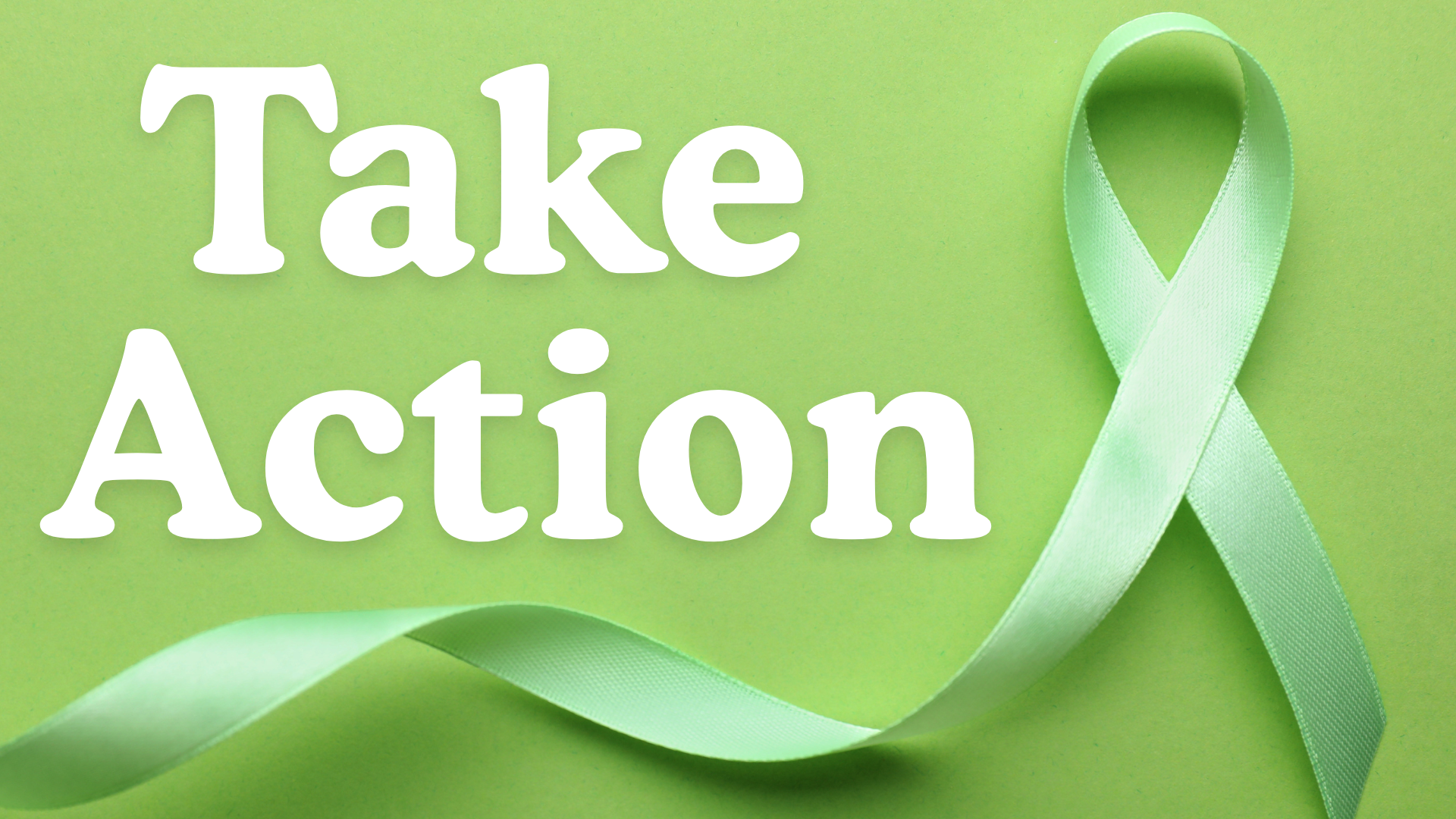
Taking steps to protect and maintain good mental health is key to living your best life. Whether it's managing stress, building emotional resilience, or simply finding a moment of peace during your busy day, developing a set of strategies to protect your mental health is essential. This Mental Health Awareness Month is all about turning action into awareness, so why not take action today to care for yourself and improve your mental health? This guide outlines ten impactful activities you can incorporate into your daily routine to boost your mental health starting today. By incorporating these activities into your days, you can take control of your mental health journey, grow personally, and improve your relationship with yourself and others. Why is Taking Action for Your Mental Health Important? Understanding the significance of proactive mental health care can change how we treat ourselves and move through our everyday lives. Taking action for yourself not only improves your overall well-being but also helps prevent existing or potential issues from becoming more severe. When you prioritize your mental health, you’ll feel a greater sense of happiness and productivity, paving the way for stronger relationships and a fuller, more enjoyable life. Focusing on your mental health is not just about problem-solving, but about living in a balanced and fulfilling way that supports your overall well-being and ability to thrive. 10 Effective Activities for Improving Your Mental Health It’s essential to have a repertoire of activities on hand that can boost your mental health. Simple activities like sleeping enough, meditating, spending time with a friend, or seeing a therapist can have huge impacts on your overall mental wellness. Prioritizing your mental health doesn’t have to be complicated or difficult, it’s just about doing activities that make you feel joyful, relaxed, or energized, fueling a better outlook on life overall. Here are 10 activities you can do today to help your brain and body to feel their best: 1. Mindful Practices Practicing mindfulness is a simple yet impactful step you can take in improving and protecting your mental health. Mindfulness practices include activities like meditating and mindful breathing to calm the mind and reconnect with the body. Meditation and breathing exercises are shown to reduce stress, improve focus, and grow your self-awareness. For more breathing exercises for anxiety relief, download our free guide “Breathe Easy” . 2. Eating Intuitively Eating intuitively is a powerful way to boost your energy and mood and reduce stress around food, helping to improve your overall mental health. This approach encourages a healthy relationship with food by promoting balance, variety, and pleasure without guilt. Intuitive eating helps you recognize and respond to your body's signals, leading to more mindful and satisfying eating experiences. By focusing on how foods make you feel, both physically and emotionally, you can make healthier choices that nourish your body and mind. Adequate nutrition has been shown to support brain function, improve mood, and reduce the risk of mental health conditions. 3. Sleep Hygiene Practicing good sleep hygiene is essential for maintaining overall health and wellbeing. Establishing a consistent bedtime routine helps regulate your sleep patterns, ensuring you get the deep sleep your body needs. Aim to go to bed and wake up at the same time each day if possible. Quality sleep is vital for cognitive function, emotional stability, and physical health, making good sleep hygiene a key component of wellness. 4. Mindful Movement Doing movement that you enjoy can have massive impacts on your mental health. Exercise reduces stress by triggering the release of endorphins, which have mood-lifting and pain-relieving effects. It also helps regulate hormones like cortisol, improving the body's ability to handle stress. By simply incorporating enjoyable movement into your routine a few times a week, you’ll see improvements in both your mental and physical health. 5. Go Outside Spending time outside can support physical, mental, and emotional well-being. It allows you to disconnect from everyday stressors, reconnect with the natural world, and experience a sense of tranquility and peace. Spending time in nature has been linked to reduced anxiety, improved mood, and increased mindfulness. Make time to explore outdoor environments such as parks, forests, beaches, or gardens. Practice mindfulness while in nature, focusing on the scenery and sounds that surround you. Incorporating nature into your daily routine can provide a refreshing break from everyday life, improving your mental health. 6. Make Time for Creative Pursuits Creative activities can be a great outlet for self-expression and reducing stress. Creativity allows you to explore new ideas, solve problems, and connect with your inner self. Even dedicating just 10 minutes a day to creative pursuits can have a positive impact on your mental health. Activities like drawing, painting, journaling, or crafting can help you unwind and stimulate your mind. Creative expression can also improve mood, enhance cognitive function, and foster a sense of accomplishment. 7. Practice Positive Self-talk Positive self-talk is a powerful habit that involves speaking to yourself in a kind, supportive, and encouraging manner. It's about cultivating a positive mindset and nurturing self-compassion. By shifting negative thoughts and beliefs to positive affirmations, you can boost your self-esteem and overall well-being. Practice acknowledging your strengths, accomplishments, and perseverance, even in challenging situations. 8. Practice Social Wellness Social wellness is about nurturing meaningful connections with others and fostering a supportive network of relationships. It involves engaging in positive interactions, building trust, and offering and receiving support. Cultivating social wellness contributes to emotional resilience, reduces feelings of isolation, and promotes overall happiness. Take time to connect with friends and family members regularly, whether through phone calls, video chats, or in-person gatherings. 9. Do Something for You Making time for yourself is crucial for maintaining life balance and preventing burnout. This involves setting boundaries, practicing self-care, and prioritizing activities that bring you joy and relaxation. Taking time for yourself allows you to recharge, reflect, and reconnect with your inner needs and desires. Self-care can take many forms, from indulging in a hobby to simply enjoying a quiet moment alone. Regularly dedicating time to yourself helps reduce stress, improve mental clarity, and enhance overall well-being. 10. Visit a Mental Health Professional Sometimes, we need professional support for our mental health, and that’s okay! Knowing when it’s time to see a therapist shows strength and self-awareness. No matter where you are in your mental health journey, getting guidance from a therapist can be a helpful tool in living your best life. Our team of mental health professionals are ready to support you now, don’t be afraid to reach out and open up. When Should I Seek Professional Help for My Mental Health? It's important to know when it's time to reach out to a mental health professional. Persistent feelings of sadness, anxiety, or emotional distress that interfere with your daily life are clear indicators for seeking professional help. If your coping mechanisms and self-care activities fail to alleviate your mental health concerns, reaching out can offer valuable support and interventions. Nurturing Your Mental Well-being Through Action Investing time and effort in your mental health can make positive differences in your everyday life. By understanding the importance of mental health practices and incorporating proactive strategies, you lay the groundwork for feeling better and staying mentally strong over time. Whether through improved sleep hygiene, mindful practices, or seeking professional help when needed, these efforts can bring more joy, emotional stability, and peace into your life. Make these activities a regular part of your day with a focus on self-growth, and you'll be on your way to a healthier mind and a fuller life.

Romantic relationships can be one of the most joyful parts of life, but they can also stir up deep fears, especially for those living with obsessive-compulsive disorder (OCD). When OCD takes shape around your relationship, it’s known as Relationship OCD (ROCD), a lesser-known but deeply distressing form of OCD that centers on obsessive fears and doubts about your partner or the relationship itself. Have you ever found yourself spending hours analyzing how you feel, seeking reassurance that your partner is “the one,” or constantly second-guessing whether you’re truly in love? If so, you’re not alone. ROCD is real, and with the right tools and support, healing is possible. Let’s break down what Relationship OCD really looks like, how it affects interactions, and how to find more peace, connection, and presence in your relationship. What is Relationship OCD? Relationship OCD is a subset of obsessive-compulsive disorder that fixates on doubts, fears, or perceived flaws within romantic relationships. Unlike the normal ups and downs that every couple experiences, ROCD involves a preoccupation with intrusive thoughts that feel impossible to stop thinking about, like whether you’re really attracted to your partner, or if they’re “good enough” for you. These thoughts can feel distressing, uncontrollable, and all-consuming. What sets ROCD apart is the compulsive mental checking that follows. You might replay interactions, examine your partner’s every word, or repeatedly ask friends or family members, “Do you think we’re good together?” These rituals, designed to bring relief, often do the opposite. They intensify the anxiety and begin to erode the connection you’re trying to protect. Relationship OCD Examples: What It Can Look Like in Real Life ROCD doesn’t always look the same for everyone. For some, it shows up as intense anxiety about having children with their partner: “What if they’re not going to be a good parent?” For others, it might revolve around analyzing every interaction or feeling jealous of a past relationship their partner had. Here are a few common presentations of ROCD: “Do I love them enough? ” spirals, even when nothing’s wrong. Feeling distressed if your partner doesn’t respond the “right” way during a conversation. Constantly seeking reassurance from others about your relationship. Comparing your partner to idealized versions of relationships you see online. Avoiding important conversations or decisions (like parent-child planning) because of underlying doubts. The key thing to remember? These thoughts are symptoms of OCD, not reflections of reality. How OCD Affects Relationships ROCD can strain even the strongest partnerships. When someone is stuck in a cycle of obsessions and compulsions, it often leads to emotional distance, communication breakdowns, and frustration on both sides. A partner might feel like they’re walking on eggshells or like they’re being constantly evaluated. Meanwhile, the person experiencing ROCD may feel ashamed, misunderstood, or exhausted by their own mind. Many individuals report feeling like they can’t be fully present during time with their partner because their mind is so busy analyzing, comparing, or worrying. And over time, these patterns can impact the health of the relationship itself. That’s why relationship-centered, mental health-informed approaches are so vital. How to Treat Relationship OCD Thankfully, ROCD is treatable. But the most effective treatments don’t just focus on the relationship, they focus on the OCD. At Thrive, our therapists often use Cognitive Behavioral Therapy (CBT) and a specialized approach called Exposure and Response Prevention Therapy (ERP) . These modalities help people face their fears without performing compulsions. Over time, this rewires the brain’s response to uncertainty. Therapists may also incorporate experiential techniques like eye movement desensitization and reprocessing, which engage both the body and mind to help clients process intrusive thoughts and emotional pain. For some, prescription medication like SSRIs may be helpful as part of a treatment plan. For couples navigating ROCD together, couples counseling can support healthy communication and connection without reinforcing compulsions. How to Support a Partner with Relationship OCD If your partner is experiencing ROCD, your role is crucial. It's not about "fixing" them though, it’s about being a safe, steady presence. Here are a few ways to support your partner with ROCD: Educate yourself about OCD and ROCD so you can identify symptoms versus your partner’s true feelings. Avoid reassurance loops . It’s tempting to soothe their fears, but constant reassurance can reinforce the cycle. Encourage professional support with a therapist or psychologist experienced in OCD. Focus on building a relationship where uncertainty is tolerated, not feared. Practice empathy. Remember that these thoughts are distressing and involuntary. With the right tools and support, both of you can learn how to thrive even in the midst of mental health challenges. Final Thoughts: Healing Together ROCD can feel isolating and confusing, but you don’t have to face it alone. Whether you’re the one struggling or the one supporting, healing happens through community, compassion, and the right care. At Thrive Wellness, we believe in compassionate, holistic care, and we’re here to walk alongside you. Whether you need individual therapy, couples counseling, or a dedicated treatment plan, we’re here to help you find your way back to connection, peace, and presence. Need support? Reach out today and begin your journey toward healing together. For tools to help you cope with anxious thoughts, download our free breathing exercises guide "Breathe Easy" .

Eating disorders, anxiety, and obsessive-compulsive disorder (OCD) make up a triad of interrelated conditions that often coexist and influence each other in complex ways. While these mental health conditions are challenging on their own, when they co-occur, they can create significant distress and disruptions in daily life. Understanding the intricate relationship between these disorders is crucial for recognizing symptoms and seeking appropriate treatment. In this exploration into the connection between OCD, anxiety, and eating disorders, we aim to shed light on their intertwined nature and provide insights for those seeking knowledge and support. Obsessive-Compulsive Disorder and Eating Disorders OCD eating disorders are a nuanced blend of obsessive thoughts and compulsive behaviors centered around food and body image. Those grappling with these disorders experience an overwhelming preoccupation with eating habits, driven by intrusive thoughts that heighten anxiety levels. This anxiety not only exacerbates compulsive eating behaviors but also fuels obsessive thinking. The overlap between anxiety disorders and eating disorders is common, with many displaying symptoms of both conditions concurrently. This overlap suggests a complex connection between these mental health issues, highlighting the need for comprehensive treatment approaches that address all aspects of these disorders together. OCD and Anorexia Nervosa OCD and anorexia nervosa often co-occur, creating a dual struggle for those affected. People with both conditions experience overlapping symptoms such as intrusive thoughts and compulsive behaviors. This dual presentation can make diagnosis and treatment more challenging. A desire for control often drives both OCD and anorexia, leading to rigid routines, rituals, and restriction surrounding food and body image that can be difficult to break. Understanding the shared behaviors and motivations between these disorders can aid mental health professionals in developing more effective therapeutic strategies tailored to their clients’ specific needs. OCD and ARFID OCD and Avoidant/Restrictive Food Intake Disorder (ARFID) share a common thread, deeply influencing anxiety levels and eating patterns. Individuals with OCD might develop rituals or compulsions around food intake motivated by distressing thoughts, mirroring the restrictive behaviors and fear characteristic of ARFID. Both disorders are driven by a strong need for control and intense fear, significantly affecting one's nutritional intake and overall well-being. The parallels between OCD and ARFID suggest that effective treatment involves addressing the underlying anxiety, fears, and aversions that contribute to both conditions. OCD And Bulimia The relationship between OCD and bulimia presents with unique challenges that offer insight into compulsive behaviors and intrusive thoughts. The co-occurrence of OCD and bulimia can look like compulsive binge-purge cycles rooted in an attempt to fight distressing thoughts about food and body image. Both disorders can act as coping mechanisms for underlying anxiety and distress, often manifesting as a means to gain control. The co-occurrence of OCD and bulimia complicates diagnosis and treatment, requiring a comprehensive therapeutic approach that addresses both sides of the disorder. OCD and OSFED OCD and other specified eating and feeding disorders (OSFED) often co-exist, each one potentially exacerbating the other. Both disorders frequently involve intrusive thoughts and compulsive behaviors, such as ritualistic eating or compulsive exercising. Anxiety emerges as a common underlying factor, fuelling obsessive fears and the need for control over food and body image. Treatment approaches for these conditions often overlap, particularly with interventions such as cognitive-behavioral therapy (CBT) that aim to address distorted thinking patterns. This overlap suggests that a holistic approach to treatment can be especially beneficial for those affected by both OCD and eating disorders. Shared Traits of OCD and Disordered Eating Ritualistic Behavior Ritualistic behaviors are commonly observed in those coping with OCD, anxiety, and eating disorders. These behaviors serve a purpose: to manage distress and create an illusion of control. Though these repetitive actions might reduce anxiety temporarily, they can become time-consuming, disruptive, and negatively impact your quality of life. In OCD, people perform rituals to alleviate obsessive thoughts, whereas, in eating disorders, these rituals revolve primarily around food and body image. Anxiety Anxiety is a prominent mental health condition characterized by feelings of worry, fear, or unease that can significantly affect daily life. It often coexists with OCD and eating disorders, creating a complex interplay of symptoms. Anxiety exacerbates the compulsions and obsessions seen in OCD, leading to heightened stress and increased distress. Perfectionism Perfectionism connects OCD, anxiety, and eating disorders, driving people to pursue unrealistic standards. This pursuit of perfection often leads to increased anxiety, as the fear of failing to meet expectations results in constant worry and stress. In OCD, perfectionism manifests through repetitive behaviors aimed at achieving flawlessness and control. Understanding the role of perfectionism in these disorders can be pivotal in formulating effective therapeutic interventions tailored to combat these perfectionistic tendencies. Differences Between Disordered Eating and OCD Disordered eating involves irregular eating behaviors often linked to concerns about weight or body shape, while OCD is characterized by intrusive thoughts and repetitive behaviors or mental acts. Although both conditions may involve anxiety and compulsive behaviors, their motivations and manifestations differ significantly. Disordered eating focuses primarily on food-related issues, whereas OCD encompasses a wide array of obsessions frequently unrelated to food. Understanding these differences helps in tailoring more targeted treatment options for people struggling with either or both conditions. Finding Help for Eating Disorders and OCD Seeking professional help is crucial for those dealing with anorexia and OCD, given the complex interplay of these disorders. Consulting therapists or counselors specializing in eating disorders can provide valuable insights and guidance. Cognitive-behavioral therapy (CBT) is an effective treatment option for modifying maladaptive thought patterns and behaviors. Additionally, joining support groups or online communities provides a sense of connection and shared coping strategies. Ensuring a comprehensive treatment plan that includes medical, nutritional, and psychological components is vital for addressing all aspects of the disorders. Moreover, involving family members or loved ones in the recovery process provides additional support and understanding and prevents accommodating behaviors in the home. Exposure and Response Prevention (ERP) is widely considered the gold standard treatment for OCD and can be a critical component in addressing co-morbid presentations of OCD and eating disorders. ERP is a form of cognitive-behavioral therapy that involves the systematic and gradual exposure to feared stimuli while preventing the accompanying compulsive response. In the context of OCD/ED's, ERP helps reduce distress associated with intrusive thoughts related to food, body image, and rituals around eating. Research has shown that ERP can significantly improve nutritional intake by increasing an individual's flexibility with food choices, reducing avoidance behaviors, and supporting eating in a variety of settings and contexts. Do You Have a Loved One Battling an Eating Disorder or OCD? Understanding the intricate link between eating disorders, anxiety, and OCD can help improve the support offered to a loved one struggling with these challenges. Recognizing common characteristics and behaviors associated with these disorders further aids in building empathy and effective communication. Education on the psychological and physical aspects of eating disorders is essential for offering informed assistance and encouragement. Assisting your loved one in gaining professional help and maintaining patience are crucial steps in supporting a loved one on their journey to recovery. To learn more about eating disorders, download our free eating disorder guide “Recovery is Real” . Embracing Understanding and Support The intersection of anxiety, OCD, and eating disorders illustrates the complex nature of mental health challenges. By learning more about these interconnected conditions, those struggling and their loved ones can gain greater understanding and uncover effective pathways toward healing. Providing holistic support centered on empathy, education, and appropriate intervention not only improves treatment outcomes but also nurtures strength and resilience in the face of challenges. Through dedicated effort, recovery can be possible for anyone and can allow them to live a full life.

Teen eating disorders are serious. As a parent or caregiver, one of the most difficult situations you can face is noticing that your teen may be struggling with a basic human need like eating. Adolescence is already a rough period for many teens filled with fluctuating emotions, changing bodies, and social pressures. However, sometimes coping with these challenges can manifest in unhealthy ways, like developing complicated relationships with food, body image, control, or exercise. Many teens face body image issues as their bodies mature, excessive pressure to meet unrealistic expectations fueled by social media and peers, and emotional instability and anxiety during their adolescent years, all of which can combine to create the perfect storm for an eating disorder. These challenges can often make your teen more vulnerable to unhealthy coping mechanisms , such as restricting food intake, excessive exercise, or engaging in disordered eating behaviors . If you’ve started noticing signs that something may not be right, it’s essential to take action to help your teen get the support they need. Recognizing the Signs of an Eating Disorder Eating disorders can vary in appearance, but there are some common signs and symptoms to watch for. If you notice any of the following behaviors or changes in your teen, it may indicate a problem that requires further attention: Preoccupation with body image : Teens with eating disorders often show increased focus on their weight or appearance, frequently expressing dissatisfaction with their body. Excessive discussions about dieting : If your teen frequently talks about dieting, food restriction, “getting skinny,” or often makes weight-related comments, this could be a red flag. Obsession with calorie counts : Teens who are obsessed with tracking every calorie, comparing the caloric content of foods, or controlling their calorie-intake may be struggling with an eating disorder. Skipping meals : Frequently skipping meals or not eating regularly is a common sign that something is wrong. Eating in isolation : Eating alone or avoiding family meals may signal discomfort with eating or shame around food. Excessive exercising : Over-exercising or using exercise as a way to purge calories can also point to an eating disorder. Spending long amounts of time in the bathroom : This could be a sign of emerging or purging behaviors, such as vomiting after meals. Hoarding foods : Hiding food or being secretive about eating may indicate issues with food control and secrecy around eating habits. Irregular periods or thinning hair : In females, a disruption in menstrual cycles or thinning hair can be physical signs of the effects of an eating disorder on the body. How Can I Talk to My Teen About Eating Disorders in a Supportive Way? Approaching a conversation about eating disorders with your child requires sensitivity and care. It's important to emphasize empathy and understanding, conveying that your primary concern is your teen's health and well-being. Initiating this conversation compassionately can create an environment of trust and openness to explore the problem. Selecting a calm, comfortable, and private setting is vital so your teen feels safe discussing a sensitive topic that may cause them to feel anxiety or shame. Effective communication hinges on using open-ended questions and active listening. Encourage your teen to share their thoughts and feelings without fear of judgment. By actively listening, you validate their experience, making them feel heard and understood. Before diving into the conversation, educating yourself about eating disorders can provide a solid foundation for discussing the issue knowledgeably. Some quick preparation with research allows you to dispel myths and provide accurate information when you talk to your teen. Why It's Crucial to Seek Medical Help When you notice warning signs, it’s important not to wait to get help. Eating disorders can be life-threatening, both physically and emotionally. They take a serious toll on a teen’s health, affecting their metabolism, hormonal function, and overall well-being. Beyond the physical impact, eating disorders can often involve deeply ingrained psychological and emotional challenges, such as low self-esteem, anxiety, depression, and trauma. After an initial conversation, the first step is to schedule an appointment with a medical provider. Your teen’s primary care doctor or a pediatrician can help evaluate their physical health and provide guidance for next steps. Be prepared to discuss the specific behaviors or signs you’ve observed, as this will help your provider better understand the situation. The doctor may conduct a physical examination, lab tests, and discuss your teen's emotional and psychological state. Building a Support Team Once you’ve taken the first step to ensure your teen’s immediate medical needs are addressed, it’s time to build a multidisciplinary treatment team . This may include: Therapists : A licensed, specially trained therapist who specializes in eating disorders or adolescent mental health can help your teen address the emotional and psychological root causes of their disorder. Medical doctors : Your teen’s doctor can monitor their physical health during the recovery process, ensuring they are safe while navigating the challenges of nourishing their body. Nutritionists or dietitians : A professional who specializes in eating disorders can create a nutrition plan tailored to your teen’s specific needs and help them rebuild a healthy relationship with food. Psychiatrists : In some cases, medication may be prescribed to address underlying mental health issues contributing to their behavior. Act Quickly and Seek Professional Guidance It’s crucial to act as soon as you recognize signs of an eating disorder in your teen. The longer eating disorders go untreated, the harder they can be to overcome. Recovery from an eating disorder is a complex journey, involving both physical and mental obstacles to tackle. It can be incredibly difficult for both the teen and the family to manage this process at home without professional support. A well coordinated team of medical providers, therapists, and eating disorder specialists is essential in guiding your teen through their recovery. This team can help monitor your teen’s progress, provide emotional support, and ensure that your teen is getting the care they need for both short and long-term recovery. Supporting Your Teen on Their Recovery Journey Eating disorders are serious, but with the right care and support, recovery is possible. If you suspect that your teen may have an eating disorder, don’t hesitate to reach out for help. Seek medical advice first, and build a support team of professionals who can work together to provide comprehensive care. Eating disorders are complex, and it’s not something you or your teen should have to face alone. Taking swift action and offering compassionate support will help your teen regain control of their health and their life so that they can thrive through their adolescence and beyond. At Thrive, we offer specialized treatment for anorexia, bulimia, binge-eating disorder, and avoidant/restrictive food intake disorder (ARFID). Our adolescent intensive outpatient and partial hospitalization programs have not only changed lives, but saved them. If you believe your teen is struggling, don't hesitate to reach out for help, we are ready to conduct a complimentary intake assessment today. To learn more about eating disorders, download our free guide "Recovery is Real" filled with practical insights and strategies to help a loved one navigate the journey toward recovery.

It can be difficult to know when it's time to reach out for help. We often try to manage stress, anxiety, sadness, or relationship issues on our own, thinking it’s just a phase or something we can work through to “get over.” But sometimes, these feelings or behaviors persist and can start affecting our overall mental and emotional well-being. The truth is, seeking therapy shouldn't be a last resort. Therapy is a valuable tool for anyone looking to better understand themselves, improve their emotional health, and work through life’s challenges. If you’ve been wondering whether it’s time to seek therapy, there are a few key factors to consider when performing a self-evaluation. Here are five signs that it might be time to reach out for additional support: 1. Is My Mood Affecting My Life or Relationships? One of the most telling signs that you may need support is noticing that your mood is negatively impacting your daily life or interpersonal relationships. Have you noticed an increase in conflict with friends, family, or colleagues? Are you feeling stuck in patterns of negativity that seem hard to shake? If your mood is affecting how you function at work, school, or in your personal life, it may be time to talk to a therapist. Pay attention to your behaviors; are you withdrawing from activities you usually enjoy? Are you reacting more intensely to situations than usual? If your emotional state is beginning to impact your relationships, interactions, or your ability to move through everyday life, a therapist can help you explore underlying causes and develop tools to improve your social wellness. 2. Am I Isolating Myself to Avoid Conflict? There’s a big difference between being introverted and isolating yourself as a way to avoid conflict. If you find yourself consistently pulling away from social situations, not because you need time to recharge, but because you’re avoiding uncomfortable conversations or emotional confrontations, this could be a sign of a deeper issue. It’s natural to want to avoid tension or discomfort, but consistent isolation can worsen feelings of loneliness and make it even harder to work through conflicts. Therapy can help you learn healthy coping mechanisms, problem-solving and communication skills, so you can feel more comfortable facing conflict in a productive way rather than shutting down or avoiding it at the cost of self-isolation. 3. Are My Emotions Out of Control? Do you ever feel like your emotions are so overwhelming that you can't regain control? If you're finding it difficult to calm yourself down, quiet your thoughts, or manage your feelings, this might be a sign that therapy could be helpful. Emotions like anger, disgust, fear, anxiety, or sadness are natural, but if they start taking over your thoughts and actions, it can be exhausting and difficult to complete daily tasks. A therapist can help you understand why your emotions are so intense and teach you strategies to regulate them and regain a sense of balance. 4. Have I Experienced Trauma That’s Affecting My Daily Life? Trauma comes in many forms, it could be from a single incident or from ongoing experiences that have affected your sense of safety, connection, or well-being. Sometimes, trauma is tied to experiences in childhood, but it can also be linked to recent events, like accidents, loss, or abuse. If you've experienced trauma and are struggling to perform basic daily tasks or meet your needs, therapy can be incredibly beneficial. Unresolved trauma can lead to feelings of anxiety, depression, or being stuck in past experiences. A trauma-informed therapist can help you process these experiences, understand their impact on your life, and work toward healing and recovery. 5. Am I Hurting Myself or Others? If your mood or behaviors are causing you to hurt yourself or others, it’s crucial to seek help immediately. Whether it’s through emotional or physical self-harm , or unintentionally inflicting harm on the people around you, this is a serious sign to find support from mental health professionals. A therapist can provide a safe, nonjudgmental space to talk about what you’re going through and help you work toward healthier ways of coping. If you’re in immediate danger or experiencing thoughts of self harm, it’s essential to reach out for help as soon as possible. There’s no shame in seeking support when you're struggling with harmful thoughts or actions. Why is Professional Mental Health Support Necessary? Although there may be barriers to seeking therapy, reaching out for professional mental health support is worth it to address the emotional and psychological issues that you shouldn’t have to deal with alone. Therapists have the knowledge and tools needed to guide you through your struggles, offering insights and solutions that aren’t available outside of the therapeutic setting. Their expertise promises not only a deeper understanding of your challenges, but the application of practical methods and skills to resolve them in your everyday life. Additionally, trained mental health professionals offer personalized strategies and coping mechanisms tailored to your unique situation and needs. These strategies are informed by evidence-based practices and a therapist’s experience working with and healing emotional and mental struggles. Personalized therapy helps clients receive the most relevant and effective guidance for their personal challenges. Embracing the Journey Toward Mental Wellness Recognizing that you might need support is the first step toward feeling better and getting the most out of life. Therapy isn’t just for when things are at their worst; it’s a proactive way to improve your emotional health, work through challenges, and build skills for resilience. If you relate to any of these situations, it might be time to reach out and explore therapy as an option. It’s okay to need help, and you don’t have to navigate this journey alone. If you’re unsure whether therapy is right for you, consider talking to a mental health professional to discuss your concerns and explore specialized support options available to you. You deserve to feel your best, and therapy can be a stepping stone to help you reach your goals. Are you in need of support? At Thrive Wellness, we offer personalized therapy and treatment to support you in whatever you're going through, don't be afraid to reach out for help . We also offer a FREE comprehensive guide to wellness in our “How to Thrive” guide . This guide offers practical, easy-to-follow habits that promote physical, mental, and emotional well-being. Start your journey towards a balanced and fulfilling life today with these simple yet transformative steps.
